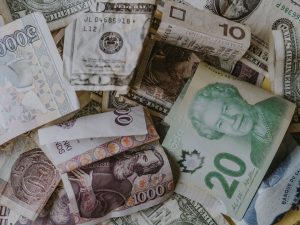Fibonacci retracements are one of the most widely used technical analysis tools in forex trading. They are based on the Fibonacci sequence, a series of numbers in which each number is the sum of the two preceding numbers. The sequence goes like this: 1, 1, 2, 3, 5, 8, 13, 21, 34, 55, 89, 144, and so on.
The Fibonacci retracement levels are derived from this sequence and are used to identify potential support and resistance levels in forex trading. In this article, we will explain how to use Fibonacci retracements in forex trading.
What are Fibonacci Retracements?
Fibonacci retracements are based on the idea that markets tend to retrace a predictable portion of a move, after which they continue in the original direction. These retracements are based on the key Fibonacci ratios of 23.6%, 38.2%, 50%, 61.8%, and 78.6%. These ratios are derived from dividing a number in the Fibonacci sequence by the number that follows it. For example, 55 divided by 89 is 0.618 or 61.8%. This ratio is commonly referred to as the golden ratio.
Fibonacci retracements are drawn by selecting two points on a chart, typically the high and low points of a trend. The retracement levels are then plotted by dividing the vertical distance between these two points by the Fibonacci ratios.
How to Use Fibonacci Retracements in Forex Trading?
Fibonacci retracements can be used in a number of ways in forex trading. Here are some of the most common:
1. Identify Support and Resistance Levels
Fibonacci retracements are often used to identify potential support and resistance levels in a trend. These levels can be used to enter or exit trades, as well as to set stop-loss orders.
For example, if a currency pair is in an uptrend, a trader can draw a Fibonacci retracement from the low point of the trend to the high point. The retracement levels can then be used to identify potential support levels where the price may bounce back up. Conversely, if the currency pair is in a downtrend, the retracement levels can be used to identify potential resistance levels where the price may bounce back down.
2. Confirm Trend Reversals
Fibonacci retracements can also be used to confirm trend reversals. If a currency pair is in an uptrend and the price retraces to a Fibonacci level, such as the 38.2% level, this could indicate that the trend is reversing. Similarly, if a currency pair is in a downtrend and the price retraces to a Fibonacci level, this could indicate that the trend is reversing.
3. Set Profit Targets
Fibonacci retracements can also be used to set profit targets for trades. For example, if a trader enters a long position on a currency pair that is in an uptrend, they can use the Fibonacci retracement levels to set profit targets. The trader might set the first profit target at the 38.2% level, the second profit target at the 50% level, and the final profit target at the 61.8% level.
4. Use in Conjunction with Other Indicators
Fibonacci retracements can also be used in conjunction with other technical indicators, such as moving averages or trend lines. For example, if a currency pair is in an uptrend and the price retraces to a Fibonacci level that coincides with a moving average, this could provide additional confirmation that the trend is likely to continue.
Conclusion
Fibonacci retracements are a powerful tool for forex traders. They can be used to identify potential support and resistance levels, confirm trend reversals, set profit targets, and provide additional confirmation when used in conjunction with other technical indicators. By understanding how to use Fibonacci retracements, traders can improve their trading strategies and increase their chances of success in the forex market.





